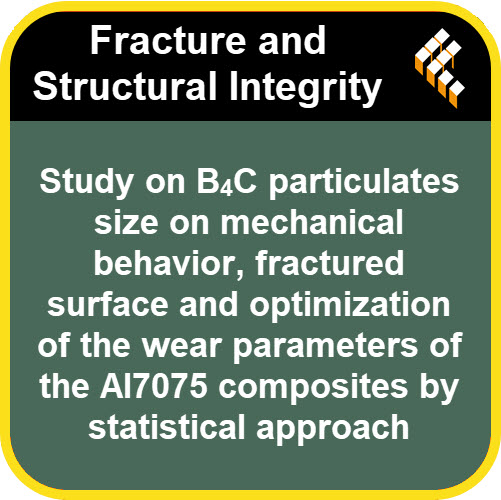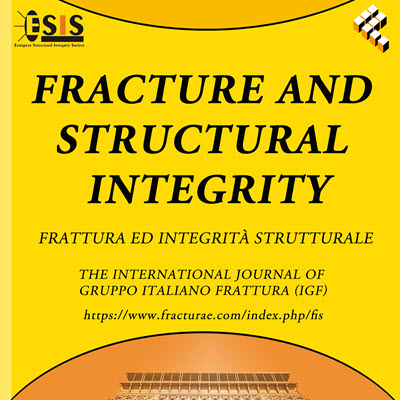Fracture and Structural Integrity: The Podcast
Stay at the cutting edge of fracture mechanics and structural integrity research with the official podcast of the Fracture and Structural Integrity journal. Join us for insightful interviews with top researchers, in-depth discussions of groundbreaking papers, and explorations of emerging trends in the field.
RSS Spotify YouTube Amazon Music
Study on B4C particulates size on mechanical behavior, fractured surface and optimization of the wear parameters of the Al7075 composites by statistical approach
2025-08-10
https://www.fracturae.com/index.php/fis/article/view/5431
Aluminum composites with varied weight percentages of 0-2.5 B4C particles and micro- and nanoparticle sizes were fabricated by stir-casting. The material's mechanical and wear characteristics were evaluated. We used dry pin-on-disc wear testing to examine the wear behavior of both micro and nano composites. In the sliding wear trials, different particle sizes (micro and nano), sliding distances (1500 m and 3000 m), and sliding speeds (3 m/s and 6 m/s) were employed. Scanning Electron Microscope (SEM) was utilized in the experiment to examine the materials and microstructures of several composites. Uniform dispersion of the micro and nano particles was readily evident in the SEM image. B4C particle microhardness increased by 16.06 % in nano composites and 10.78 % in micro composites. In a similar way, B4C particles' tensile strength increased by 12.90% in nano composites and 8.78% in micro composites. Taguchi design for experimental technique was applied to a L8 orthogonal array in order to design and ascertain the effects of sliding distance, sliding speed, and particle size on dry sliding wear behavior. ANOVA study showed that the most significant influencing factor on wear resistance was particle size (61.29%), followed by sliding speed (17.27%) as well as sliding distance (14.20%). From the confirmatory tests, the Coefficient of Friction (COF) of the produced composites had a maximum error of 9.09 % and the error of 3.33 % was found in the wear rate which was within the acceptable limit. The wornout surface shows that the composite reinforced with nanoparticles has a smooth wear surface with a finer wear scar.
DownloadFiletype: MP3 - Size: 5 MB - Duration: 21:59m (320 kbps 44100 Hz)
Powered by Podcast Generator, an open source podcast publishing solution | Theme based on Bootstrap
